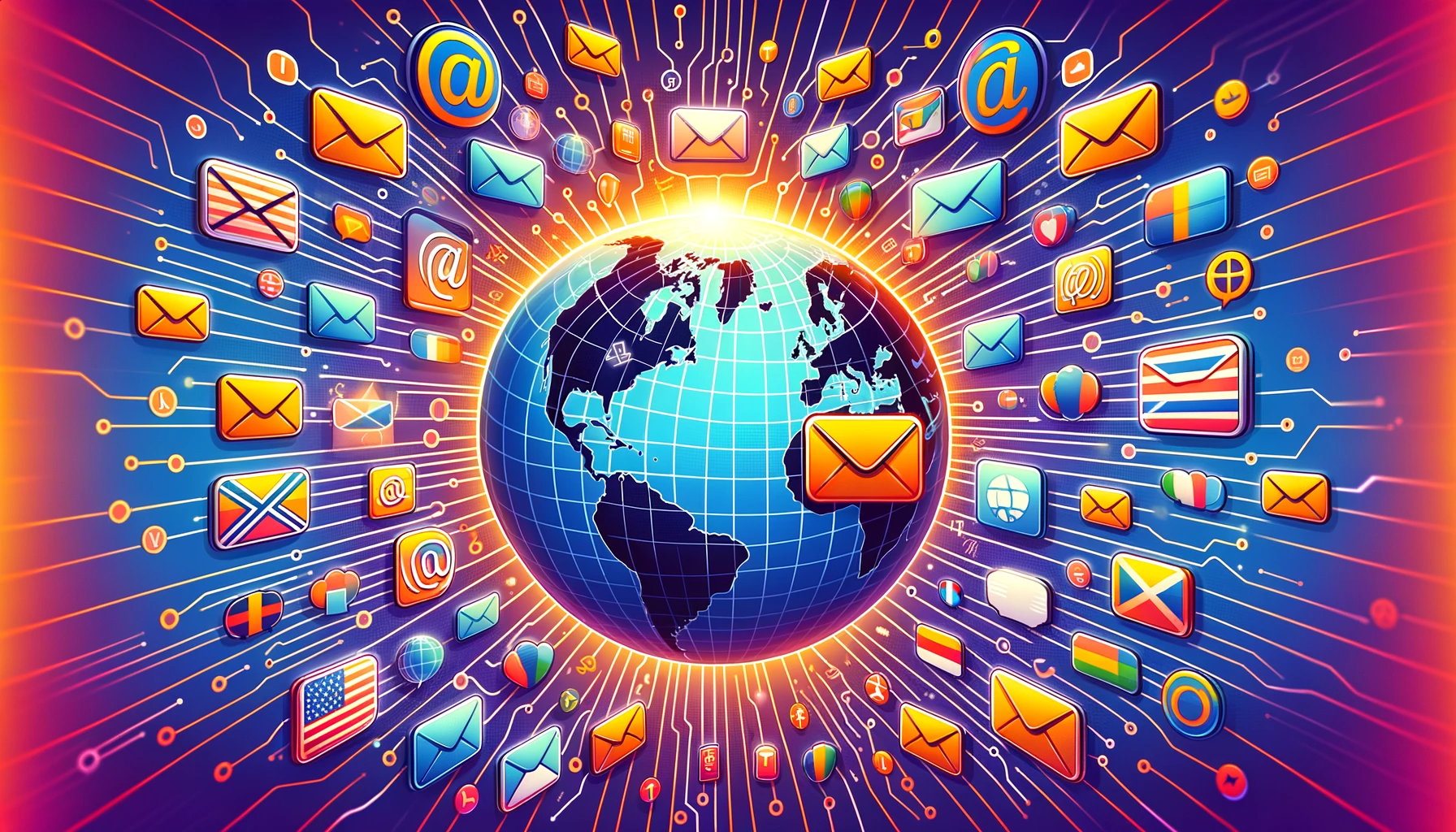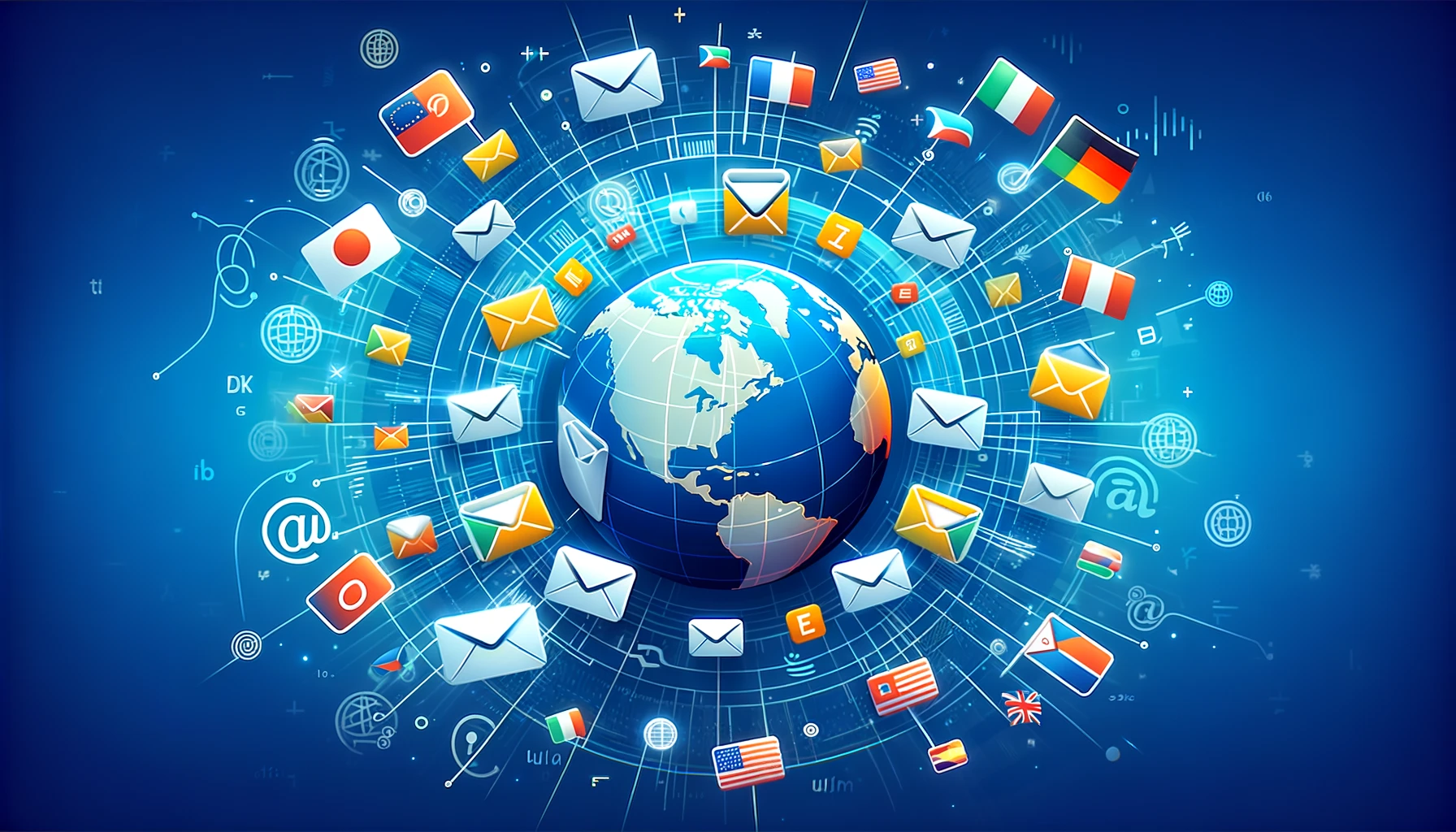Benefits of a Multilingual Email Marketing Strategy
Advantages of a Multilingual Email Strategy
Benefits of Reaching Multilingual Audiences
Adopting a multilingual email strategy expands your brand's reach, enabling communication with a broader audience. This approach respects the cultural and linguistic preferences of your subscribers, potentially increasing your global footprint and opening up new markets for your products or services.
Improving Engagement with Targeted Language Content
Sending emails in the recipient's preferred language significantly boosts engagement. Subscribers are more likely to interact with content that speaks to them in their own language, as it feels more personalized and respectful of their cultural identity. This strategy enhances the overall user experience and can lead to higher conversion rates.
Enhancing Brand Perception through Localized Communication
Localized communication not only breaks language barriers but also enhances brand perception by showing your commitment to inclusivity and customer satisfaction. Multilingual emails demonstrate that your brand values diversity and is willing to go the extra mile to cater to various linguistic groups.
Utilizing Data Insights for Language-Specific Email Optimization
Leveraging analytics to understand the language preferences of your audience can lead to more effective email marketing campaigns. Insights gathered can help refine your strategy, allowing for the optimization of content for different language groups and improving the overall effectiveness of your communication.
Maximizing Reach through Multilingual Email Marketing Campaigns
A multilingual email marketing strategy ensures that your message resonates across cultural and linguistic boundaries, maximizing your reach. This approach can significantly enhance your brand's visibility and appeal in the global marketplace, driving growth and expanding your subscriber base.
How to Create a Multilingual Email Template
Utilizing Language-Specific Content in Email Templates
When creating a multilingual email, it’s important to incorporate language-specific content that resonates with each target audience. This means not just translating the message, but also localizing content, including images and calls-to-action, to reflect cultural nuances and preferences.
Best Practices for Designing Multilingual Email Templates
Designing multilingual email templates requires attention to detail to ensure clarity and readability across languages. Use simple, universal design elements and ensure that the template accommodates text expansion, which often occurs during translation. It’s also vital to use a responsive design that adapts to various devices and email clients.
Segmentation Strategies for Multilingual Email Template Creation
Segment your email list based on the language preferences of your subscribers. This allows for targeted communication and ensures that recipients receive messages in their preferred language. Effective segmentation is key to a successful multilingual email marketing strategy, as it enhances personalization and subscriber satisfaction.
Choosing the Right Email Marketing Platform for Multilingual Support
Select an email marketing platform that supports multilingual campaigns and offers features like dynamic content insertion based on the subscriber’s language preference. Platforms like Adobe Campaign provide robust support for sending emails in multiple languages, including tools for translation and content management.
Verifying Compatibility of Multilingual Templates Across Devices and Email Clients
Before launching your multilingual campaign, it’s crucial to test your email templates across different devices and email clients to ensure compatibility. This step helps identify any formatting issues that could affect the readability of your email in different languages, ensuring a smooth and engaging experience for all subscribers.
By implementing these strategies, brands can effectively engage with a diverse audience, improve global reach, and enhance customer satisfaction through tailored, culturally sensitive communication.
Key Elements of Successful Multilingual Email Marketing
Effective Translation and Localization of Email Content
Successful multilingual email marketing hinges on accurately translating and localizing content to resonate with each target audience. Beyond direct translation, localization involves adapting cultural nuances, idioms, and regional specifics to ensure the email feels native and personalized, significantly boosting engagement and effectiveness.
Utilizing Analytics to Understand Multilingual Subscriber Preferences
Analytics play a crucial role in multilingual email campaigns, offering insights into subscriber behaviors and preferences across different languages. This data enables marketers to tailor content more effectively, optimize send times for various time zones, and refine segmentation strategies, leading to higher open and conversion rates.
Adopting Multilingual Email Copy Best Practices
Crafting email copy for a multilingual audience requires a deep understanding of linguistic nuances and cultural sensitivities. Best practices include using simple, clear language, avoiding idioms that may not translate well, and ensuring the email’s call-to-action is culturally appropriate and effective in each language variant.
Ensuring Delivery of Multilingual Emails to Recipients' Preferred Language
To maximize the impact of your email campaigns, it's crucial to ensure that emails are delivered in the recipient’s preferred language. This involves segmenting your email list based on language preferences, a practice that enhances personalization and recipient satisfaction, leading to improved engagement metrics.
Leveraging Multilingual Email Segmentation for Targeted Campaigns
Segmentation is a powerful tool in multilingual email marketing, allowing for the delivery of targeted content that meets the specific needs and interests of different linguistic groups. By customizing messages for each segment, businesses can significantly increase the relevance and effectiveness of their communications, fostering stronger connections with an international audience.
Why It Is Important to Send Multilingual Emails?
Addressing Diverse Audience Needs and Preferences
Sending multilingual emails allows businesses to cater to the diverse language needs and preferences of their global audience. This approach demonstrates respect for cultural differences and can significantly enhance customer experience, leading to higher satisfaction and loyalty.
Enhancing Global Brand Presence and Customer Communication
Multilingual email campaigns play a vital role in expanding a brand’s global presence. By communicating in the native language of your recipients, you not only improve comprehension and engagement but also establish a stronger, more relatable brand image on an international scale.
Optimizing Email Outreach to Multilingual Subscriber Segments
Multilingual emails optimize outreach efforts by ensuring that marketing messages are accessible to a broader audience. This strategic approach can lead to increased open rates, higher click-through rates, and improved conversion metrics, maximizing the overall impact of email marketing campaigns.
Strengthening Customer Relationships Through Personalized Multilingual Content
Personalization is key to building strong customer relationships, and multilingual content takes personalization a step further by addressing recipients in their preferred language. This level of personalization fosters a deeper connection between the brand and its customers, enhancing trust and loyalty.
Maximizing the Impact of Multilingual Marketing Campaigns
Multilingual email marketing campaigns are designed to maximize reach and impact across a global audience. By effectively communicating with subscribers in their own language, brands can significantly increase the effectiveness of their marketing efforts, driving growth and expanding their international footprint.
In today’s global marketplace, the ability to communicate effectively with a diverse audience is more important than ever. Multilingual email marketing offers a strategic advantage, allowing brands to connect with subscribers in a more meaningful way, enhance customer engagement, and achieve better results from their email marketing initiatives.
Benefits of Multilingual Email Analytics
Understanding Performance Across Diverse Language Segments
Multilingual email analytics provide valuable insights into how different language segments perform, allowing marketers to see which languages yield the highest engagement rates. This data is crucial for understanding the global reach of your email campaigns and identifying areas where adjustments may be needed to improve outcomes.
Obtaining Insights on Multilingual Subscriber Engagement and Interactions
By segmenting your subscriber list and analyzing engagement metrics such as open rates, click-through rates, and conversion rates by language, you can gain a deeper understanding of how multilingual audiences interact with your content. This enables you to tailor your approach to meet the specific preferences and behaviors of each language segment.
Optimizing Content Based on Language-Specific Email Analytics
Language-specific email analytics allow marketers to refine their content strategy for each audience segment. By using dynamic content and conditional formatting within your emails, you can automatically translate and adjust content based on the recipient's language, ensuring that each subscriber receives the most relevant and engaging message.
Measuring Multilingual Email Deliverability and Effectiveness
Analytics provide key metrics on deliverability and effectiveness across different languages, helping you to identify any issues that may affect your email’s performance. This is essential for ensuring that your messages reach the right people and that language barriers do not impede your email marketing efforts.
Enhancing Multilingual Email Strategies Through Data-Driven Decisions
With insights from your analytics dashboard, making data-driven decisions to enhance your multilingual email strategy becomes easier. You can easily see which languages and content types resonate most with your audience, allowing for continuous improvement and optimization of your campaigns to better meet the needs of a diverse subscriber base.
Leveraging multilingual email analytics is your best bet for effectively managing and optimizing international email marketing campaigns. By understanding and responding to the unique preferences and behaviors of each language segment, you can significantly improve engagement and conversion rates, making your multilingual strategy a key component of your overall marketing success.
Inagiffy: Your Ultimate Newsletter Marketing Partner
In today's crowded digital landscape, building genuine, lasting connections with your audience is more crucial than ever.
Enter Inagiffy – a premier newsletter marketing agency that understands the transformative power of well-crafted newsletters. We're not just about sending out emails; we're about curating stories, insights, and value that resonate deeply with your audience.
Our end-to-end solutions ensure that from ideation to delivery, every newsletter reflects your brand's essence and speaks directly to your audience's needs and aspirations. Let Inagiffy empower your brand, forging authentic relationships and driving engagement through the potent medium of newsletters.
Dive into the future of meaningful communication with us and watch your audience grow, engage, and thrive.
FAQs
What is multilingual marketing?
Multilingual marketing involves creating and delivering marketing messages in multiple languages to cater to the linguistic preferences of a diverse audience. It’s a strategy that enhances global reach and customer engagement by communicating in the native language of each market segment.
How do I send a multilingual email?
To send a multilingual email, start by segmenting your subscriber list based on language preferences. Then, use an email marketing platform that supports dynamic content to automatically adjust the email's language based on the recipient's profile. Ensure that translations are accurate and culturally relevant.
What are the 7 email marketing strategies?
Personalization: Tailoring emails to individual preferences and behaviors.
Segmentation: Dividing your email list into targeted groups.
Mobile Optimization: Ensuring emails are readable on mobile devices.
Automated Campaigns: Using automation to send timely and relevant emails.
A/B Testing: Comparing two versions to see which performs better.
Valuable Content: Providing useful and engaging content.
Clear CTAs: Using compelling calls-to-action to encourage a response.
Why is multilingual marketing important?
Multilingual marketing is crucial for businesses looking to expand their global footprint. It allows brands to connect more deeply with international audiences by respecting their language and cultural nuances, leading to improved customer loyalty, higher engagement rates, and increased sales in diverse markets.


Comments
Your comment has been submitted